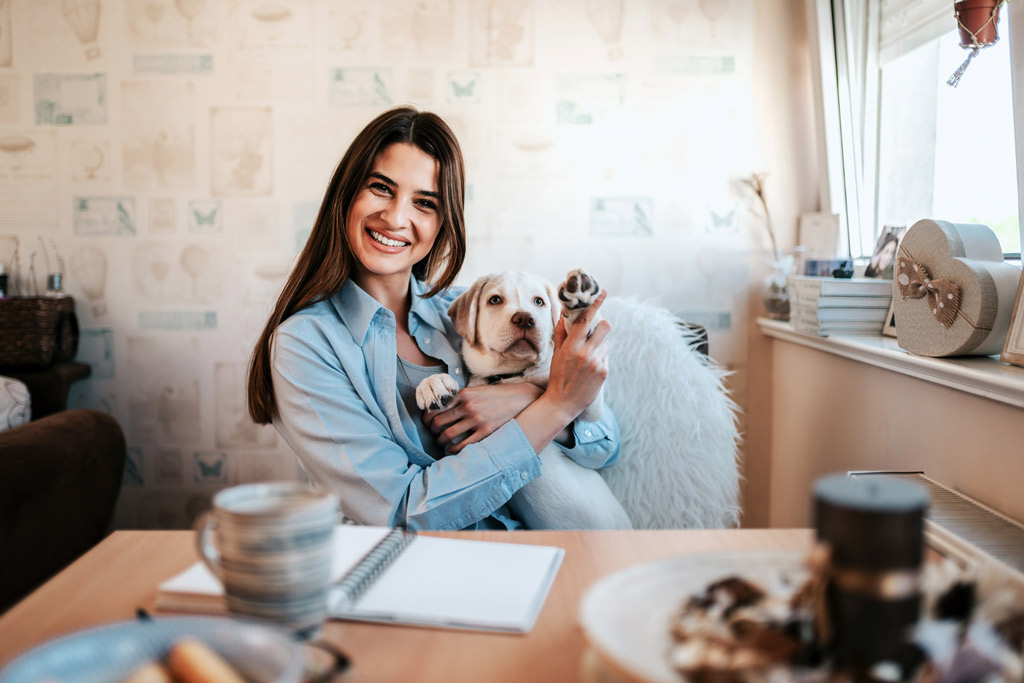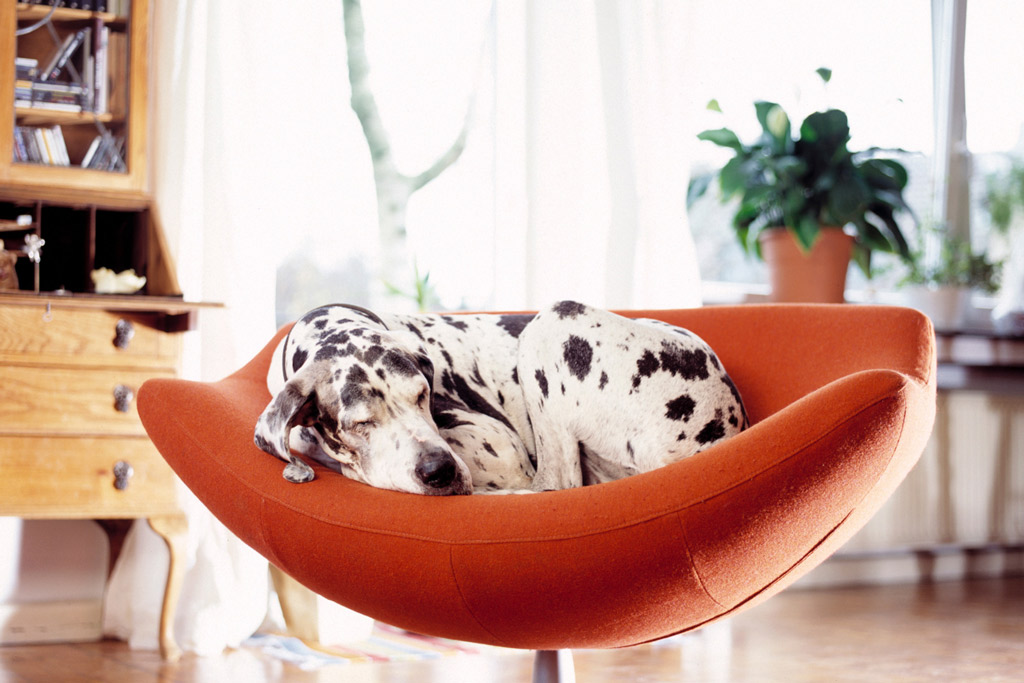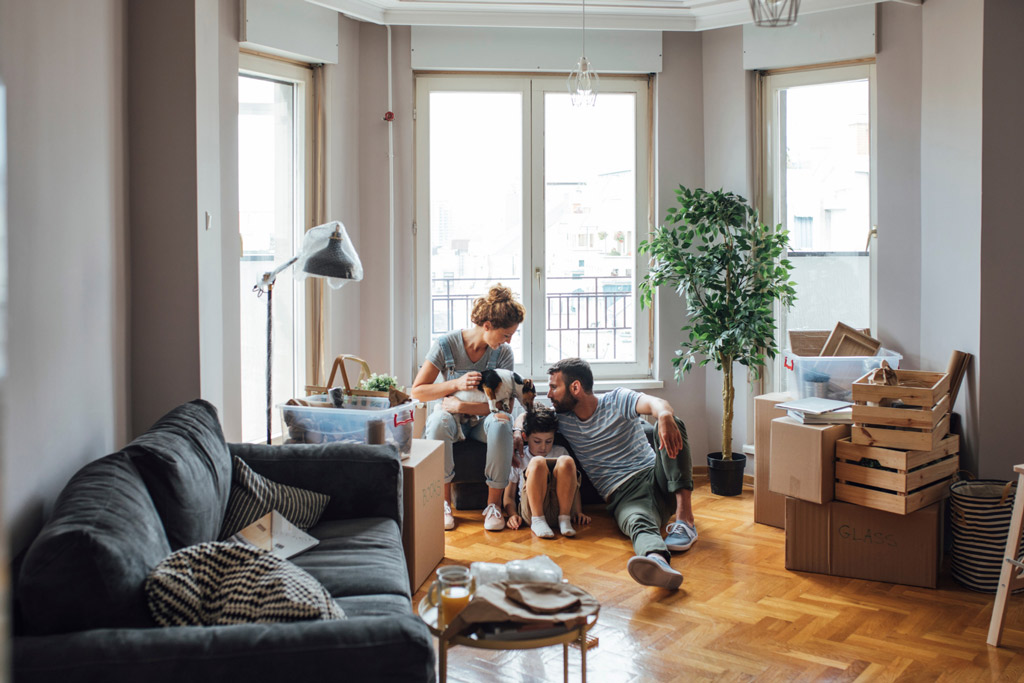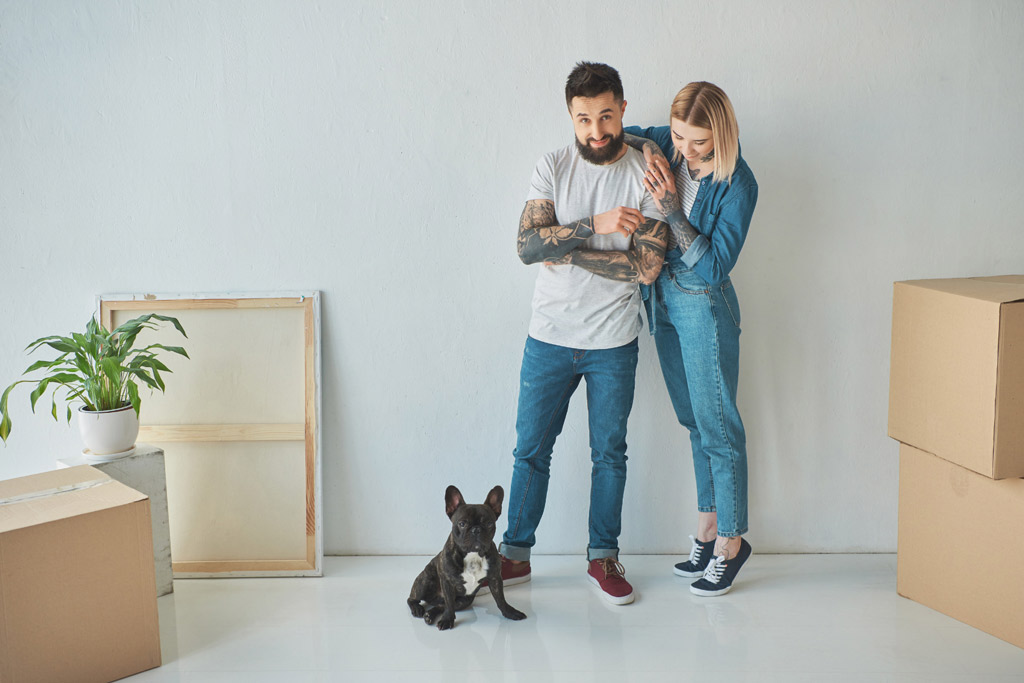
We often hear that a dog needs a big space, a garden… to live comfortably. However, many people live in apartments nowadays, especially in the city.
So, can I have a dog in an apartment? Dogs can live in an apartment as long as their care needs are met, which include daily exercise, nutrition, a place to rest, and potty spot.
Even big dog breeds don’t need much space. However, how calm and quiet the dog is, plays a major role before deciding to bring a dog home.
There are certain criteria to help you choose the right dog for you and how to make your apartment safe and cosy for your future furry friend.
Choosing the Right Dog for You
If you are currently living in an apartment or flat, you don’t necessarily need to put your plans to get a dog on hold until your living arrangements change.
The size of the apartment that you live in isn’t as important as dedicating time and love along with care.
“Here at Blue Cross pet charity we don’t have any fixed rules about what makes the perfect home because every pet and their needs is different.”
Nikki Smith, a rehoming operations manager at Blue Cross.
For example, although Chihuahuas are often thought of as a perfect dog for flats or small homes due to their diminutive size, they are quite anxious and are known for barking. Noise can carry easily in a block of flats and neighbours might become irritated by the sudden barks of an excited pup.
To make sure you consider the needs of your future doggy carefully, here’s a 4 point checklist:
#1 – List Your Priorities
First of all, no kidding about a dog being a huge responsibility. They simply are. Although once you go through what you need to know and do, their company is worth it. The challenge arises when you have a 9-5 job.
If you are looking to add a new dog to your home, take some time to figure out which type of dog will best fit your lifestyle and your apartment.
- Do you have time to walk a dog and play with her daily? Or will you consider a dog walker?
- Who will take care of the dog when you are away?
- Do you want a puppy or an adult dog? Puppies often take a lot more time to train, so keep that in mind. Sadly, grown dogs might come to you scarred due to a bad experience with their last owner.
- Do you want to adopt or do you prefer to get a puppy from a breeder?
- Do you want a dog that requires a lot of attention? Or are you looking for more of an independent type?
- Will your dog be spending time around children? Some breeds are much better with kids than others.
- Can you afford a dog? Consider the costs of getting a dog to covering her needs (food, grooming, vet bills, toys, etc.).
There’s no wrong or right answer, your goal is to look for a dog that is a good match with you by making conscious and informed decisions. If you want to read more about being a dog parent, check our First-time dog owner blog post.

#2 – Look for Smaller Dogs
It is a good idea to choose a dog based on where you plan to live. If you live in a small space, like an apartment, it’s generally a good idea to go with a breed that won’t get too big.
Smaller dogs need less space and they are easier to transport when going to the vet or on holidays. Also, they are easier to bring along in public transport.
- Research different dog breeds that align with your priorities and personality.
- Toy breeds are great in size but some are noisy, like Chihuahuas.
- If you are considering getting a puppy, make sure you are aware of the breed’s growth tendency, especially when fully grown.
Haven said that it’s not always the case that a small breed makes the perfect match for a flat. Greyhounds, for example, are very chilled for their size.
“Sometimes large, slow breeds can be surprisingly well suited to apartments, provided they don’t have a strong protective instinct”.
Dr Starling.

#3 – Choose a Quiet Breed
The dog’s personality and temperament have a big role to play. A quiet and calm dog makes a great companion for living in an apartment.
When you live in an apartment, the walls are too thin and your neighbours will be close by. Unless you live in a building with excellent soundproofing, you should keep noise in mind when choosing a dog.
- Look for the more quiet dog breeds, i.e. dogs that don’t bark often and certainly don’t howl.
- The herding and hunting group tend to be very alert, so are more likely to bark.
- There are several breeds that are known for being pretty quiet, for example, Boston Terriers, Pugs, and Cavalier King Charles Spaniels.
“Many herding breeds and hunting dogs such as terriers are also very alert and therefore likely to bark.”
Dr Starling.

#4 – Pick a Low-Energy Level Dog
Different types of dogs have different levels of energy. When you live in an apartment, your dog probably won’t be able to move around as much as she would if she lived in a big house with a garden.
- Consider getting a dog with a lower energy level to keep in your apartment and look for a dog that does not constantly need to be busy.
- The herding group (German Shepherds, Border Collies, and Golden Retrievers, for example), are generally very active dogs and require big amounts of exercise.
- Toy breeds and most small dogs have low-energy levels, although there are some exceptions like Boston Terriers. However, they definitely need less exercise than medium and big dogs. For example, Basset Hounds are low energy dogs.
Rewardless of the dog breed, you still need to keep your dog mentally and physically active on a daily basis. If you want to read more about keeping your dog exercised, check our How often should I walk my dog blog post.

Making an Apartment Dog-Friendly
Here are some things that you can do to transform your flat into a dog paradise but also to establish some house rules.
Your dog should be comfortable, but that doesn’t mean that she gets to run the place. Here’s a list of things to bear in mind:
- Allow lots of natural light into your flat. Dogs, like all mammals, need sunlight to stay healthy. They also enjoy a view.
- Pick durable materials for flooring, furniture (tables, sofa) and decor (curtains, cushions).
- Dog-proof the house and store fragile objects out of reach. The less there is to knock over, the better.
- Free up as much floor space as possible so there’s somewhere to run around and play.
- Poison-proof your house: remove poisonous plants, human food, medications, cleaning products, etc. from your dog’s reach.
- Create and set a space for your dog to sleep and rest.
- Set boundaries, i.e. is your dog allowed on the sofa? Also, consider placing baby gates to restrict certain areas.
- Housetrain your dog. Potty training is very important regardless if you choose a spot in the garden, the balcony or the pavement.
- Train your dog from day one to avoid unwanted behaviour.
- Establish a regular routine for mealtimes, to reduce the possibility of smelly accidents on the floor.
- Keep your dog well-exercised according to its breed and temperament.
If you want to know more about making your apartment dog-friendly, check our How to make your home dog-friendly and safe blog post.

Related Questions
As you now know after reading this article, it’s not only about the space. However, you still need to check with your landlord or review your rent contract/agreement, to avoid breaking any clauses.
To prevent excessive barking, keep your dog active with walks, playtime and also entertaining toys when she’s alone at home. You can block certain windows if your dog likes barking to everything that moves. Finally, continue training her to improve her behaviour and always reward her achievements.
Here’s a list of mostly small and toy breeds that are good for living in a flat.
– Basenji.
– Bichon Frise.
– Boston Terrier.
– Bulldog.
– Cavalier King Charles Spaniel.
– Chihuahua.
– Chinese Crested.
– Dachshund.
– French Bulldog.
– Greyhounds.
– Maltese.
– Manchester Terrier.
– Pomeranian.
– Poodle.
– Pug.
– Shiba Inu.
– Shih Tzu.
– Yorkshire Terrier.
